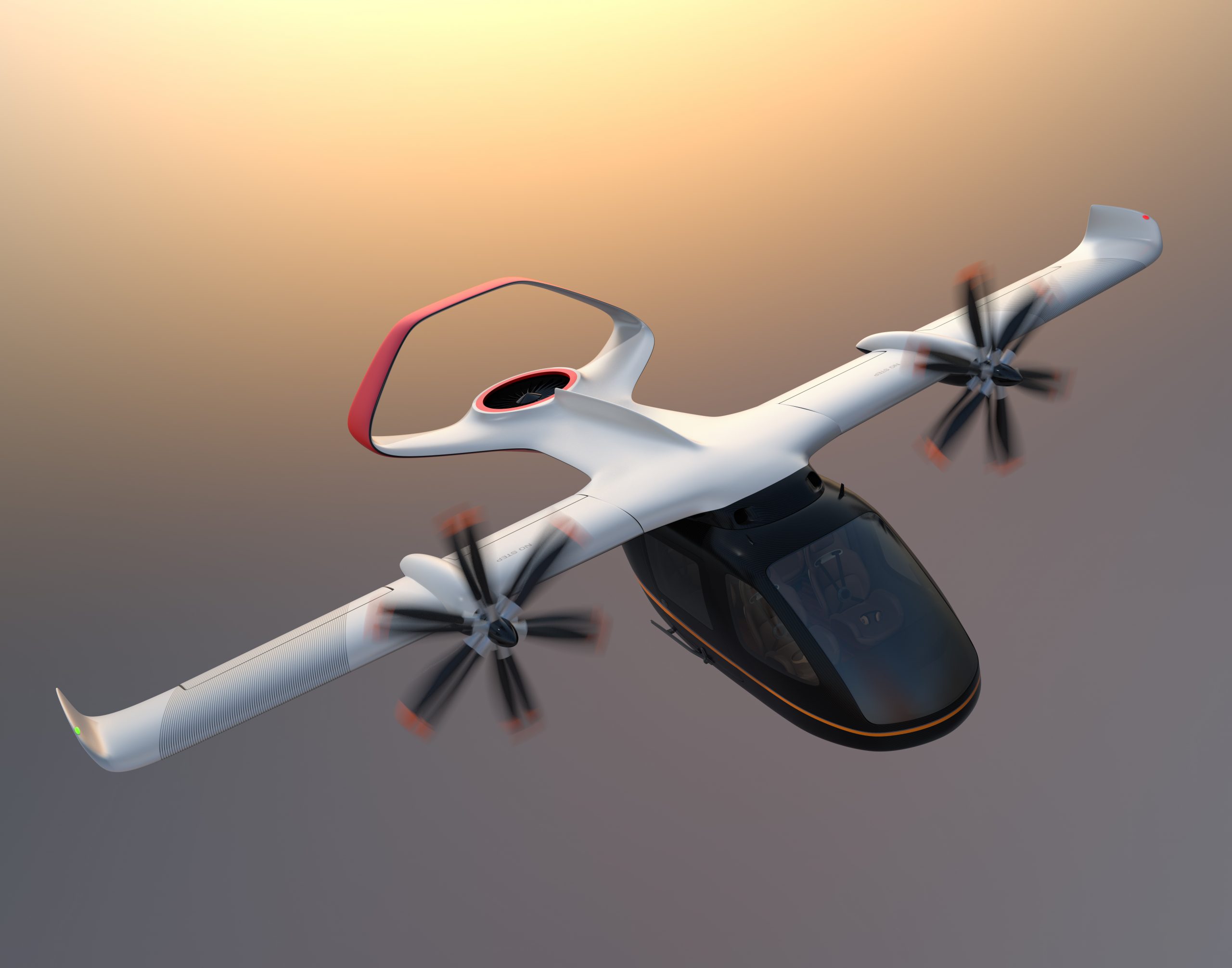Taking off into the future of air travel
By Carlo Tursi
25 July 2022
Shares
Carlo Tursi, Chief Executive Officer of UrbanV, tells International Airport Review about the progress made to date on the development of vertiports that will accommodate all the new advanced air mobility aircraft that will be certified in the coming years.
Advanced Air Mobility (AAM) represents one of the most promising forms of innovative and sustainable mobility in the coming years. It is an entirely new service providing transportation for people and goods that is battery-powered and thus emission‑free in flights; a form of mobility that can reshape the boundaries of flight and airports as we know them today; as well as a solution for heavily congested urban centres.
The potential of the sector is growing strongly, with a market value for Europe estimated at over €4 billion by 2030, and global capitals activating to integrate AAM within their transport systems and investing to build the ground structures needed for the take-off and landing of the e-VTOLs.
In this context, Italy has been distinguishing itself for its pioneering approach: thanks to a partnership between Aeroporti di Roma (ADR), Atlantia, and Volocopter, with the support of ENAC (the Italian Civil Aviation Authority), Rome will be one of the first European capitals to activate AAM routes between Fiumicino Airport (FCO) and the city centre, by 2024.
Intra-city and inter-city mobility
Our goal is to make sure vertiports will be fully integrated in the transport ecosystem of the cities where they are built, enhancing intermodality and accessibility in urban and regional areas”
Following at least two years of studying and research, in order to facilitate the launch of the AAM operations, Aeroporti di Roma – together with Aeroporto di Venezia (VCE), Aeroports de la Cote d’Azur (NCE), and Aeroporto Guglielmo Marconi di Bologna (BLQ) – founded UrbanV, a company focused on the study, design, construction and management of vertiports, the essential infrastructure for eVTOLs to connect airports with city areas and promote intra-city and inter‑city mobility.
UrbanV was announced at the end of 2021 with the aim of positioning itself as a leader in the vertiports sector at a global level, having developed a specific experience in AAM, achieved within the main Italian and European task forces, where it has contributed to regulate the sector and to define the reference business model, while having consolidated relationship with leading global eVTOL manufacturers and operators and having built a strong network of industrial relations for an international roll-out.
The company has identified, in specific areas of reference, a portfolio of projects for the realisation of vertiports, starting from Rome, then Nice/Cote d’Azur, Venice and Bologna; locations that are strategic due to the good weather and the proximity to the sea, which presents minimum obstacles and where routes are already established.


Besides Volocopter, we are engaging with several OEMs (original equipment manufacturers) to be ready to deploy vertiports that will accommodate all the new aircraft that will be certified in the next few years, according to their specific requirements (e.g., some will be replacing charged batteries for drained ones when needed, and some will have the batteries stay in the eVTOL for fast charging).
Defining regulatory requirements
We regard the elaboration of guidelines for the construction of vertiports as essential for the fast international deployment of the AAM forces and, together with Aeroporti di Roma, we are working on intensifying our partnerships with industry players and institutions to contribute to the process.
In Italy, we are working with ENAC, ENAV and the Ministry of Innovation to design the national roadmap to define the AAM growth, while identifying and improving the technological, regulatory and infrastructural gaps for the new ecosystem; at the international level, we participate to the EASA task force to define the regulatory requirements for the construction and management of vertiports, as well as to ACI Europe’s Drone Task Force to share best practices among airports on UAM issues.
At the same time, we are concerned with providing passengers with a travel experience that is as seamless and innovative as possible, adding a digital element to operations including the reception of passengers, security checks, and boarding and landing operations.
Rome will be one of the first European capitals to activate AAM routes between Fiumicino airport and the city centre, by 2024″
The path we embarked on to be forerunners in the implementation of AAM is challenging, made of different steps and milestones. So far, thanks to ENAC’s support, the first prototype of the VoloCity air taxi has been showcased in Rome, and Aeroporti di Roma has made its facilities available to ENAC and Regione Lazio for the first testing of flying drones; by the end of 2022, we expect to carry out more testing with Volocopter’s eVTOLs, with the aim to give solidity and concreteness to our plan and to prove our role as pioneers in building the mobility of the future.
Our timeline is clear: in time for the Jubilee 2025, a great occasion of international relaunch and visibility for Rome and Italy, AAM will be active to contribute to increasing the competitiveness of our country’s connectivity and its transport ecosystem.
Biography


A mechanical engineer with an MBA from MIT Sloan, Tursi began his career as a consultant at Kearney. Later, he was Director of Corporate Development for Better Place, an Israeli-American start-up focused on developing infrastructure for electric mobility. He was an Associate at Quantum Pacific, where he worked primarily in the automotive and energy sectors, while also contributing to the company’s venture capital activities. For almost five years he was General Manager for Italy of Uber, the largest ride-hailing company in the world. Most recently he was in TIM, the leading Italian telecommunications company, where he was Head of Business Development and CEO of TIM Ventures.













